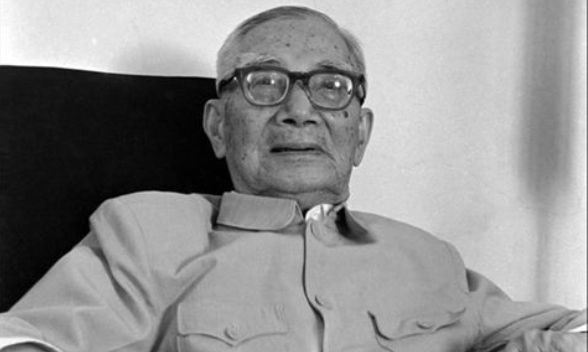Mao was born in Zhenjiang, Jiangsu Province. He was a famous bridge expert, civil engineering scientist and educator of China.
Mao graduated from Tangshan Engineering College in 1916. He got his Master's degree of civil engineering from Cornell University in 1917 and earned the first Ph.D. ever granted by the Carnegie Institute of Technology (now Carnegie Mellon University) in 1921, with his doctoral treatise entitled Secondary Stress on Frame Construction.
Returning to China, Mao held a variety of posts, such as the professor of Tangshan School of the Jiaotong University, director of Engineering Course of Southeast University, president of Engineering Course College of Beiyang University, director of Project Office of Hangzhou Qiantangjiang Bridge, and director of Bridge Planning Project Office of Transportation Ministry of Kuomintang Administration. In 1948, he was elected to be an academician in Academia Sinica. After the founding of the PRC, he assumed the office of president of Jiaotong University, director of the Railway Institute under the Ministry of Railways, director of Wuhan Yangtze River Technical Advisory Committee and president of Railway Scientific Research Center. In 1955, he was elected as an academician of the Chinese Academy of Sciences and later vice-director of its Technological Science Division. In 1979, he was recognized as one of the "Notable Alumni" of Carnegie Mellon University for his outstanding contributions to civil engineering. In 1982, he won the title of Foreign Academician issued by the US National Academy of Sciences. In 1984, he became an honorary member of the Canadian Society for Civil Engineering. Mao joined the CPC in October 1987. He died of illness on November 12, 1989.
Mao long engaged in the practice, scientific research and education of bridge engineering, structural mechanics and soil mechanics. He guided the design and building of China's first dual-purpose road-and-railway bridge - Qiantangjiang Bridge over the Yangtze near Hangzhou. This is also the first bridge built by Chinese themselves with a wide span. The bridge base, pier and steel truss beams were constructed at the same time. What's more, a semi-mechanical operation was realized in all engineering including water jet piling, pneumatic caisson and steel truss beam building by a floating platform. As a result, the great task was finished within only two-and-half years at a low cost. For this, Mao won an honorary medal from the Chinese Institute of Engineers in 1941. A group of technical talents in civil engineering, especially in bridge engineering, were cultivated. Mao also participated in the construction of new China's first modern bridge - Wuhan Yangtze River Bridge, which later connected the Beijing-Hankou and Guangzhou-Hankou railways, becoming a transportation artery linking north and south China and joining the three towns of Wuhan. What's more, he served as leader of the examination group for the construction of the Great Hall of People.
Mao advocated the scientific research and teaching of soil mechanics and launched the Chinese Society for Soil Mechanics and Basic Engineering in 1948. Besides studying and building bridges, Mao also published over 200 articles on the subject in the Chinese and foreign press. He led the compilation of the Technical History of China's Ancient Bridges and China's Ancient and Modern Bridges (in Japanese, English, French, German and Spanish editions). He also wrote Qiantangjiang Bridge, Wuhan Yangtze River Bridge, Selected Works of Popular Science by Mao Yisheng (I, II) and Mao Yisheng Writing Collections.

